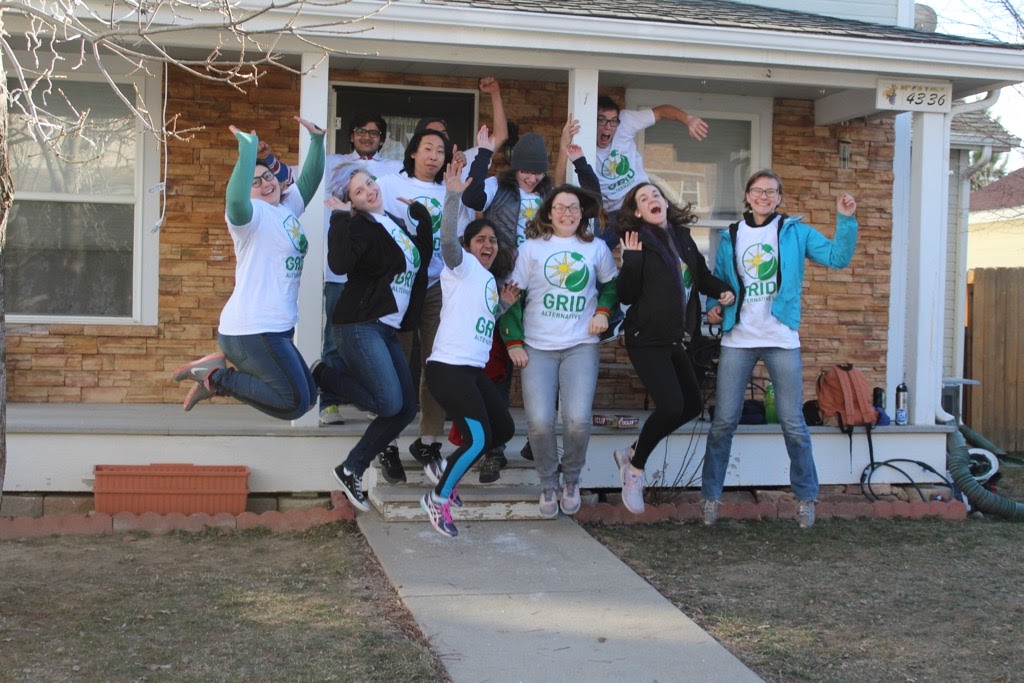Eleven freshmen from Beloit College in Wisconsin drove 16 hours to Colorado to take part in Solar Spring Break last week, helping to install a system for a family in Boulder. GRID Alternatives' Solar Spring Break gives college students from around the country the opportunity to spend their vacation week installing solar in underserved communities.
"On the first day when everyone went up on the ladder, I was one of the people who did not because I have a fear of heights," said Matt, one of the leaders of the group. "So [on the second day] anxiety was kicking in when I got up on the ladder but Drew was so patient and said 'Take your time, if you want to go down you can,' so I got through about an hour, taking measurements and adjusting the railing, and I was able to stay up there."
Jane and Matt, leaders of Beloit's Student Sustainability Group, championed Solar Spring Break to their student government to procure funding. The Beloit students were keen to get hands-on experience on a solar electric system because of its potential to solve one of the major environmental challenges of today: how to increase access to renewable energy for all people. They started the week with a tour of Ecotech Institute in Aurora, building their understanding of the solar industry and other green energy careers. They then helped GRID's Construction team install a system for Eddy and his family in Boulder.
Katie, another Solar Spring Break student, said, "I worked a lot with ground team because I was not super comfortable on the roof, and we had downtime when we were waiting for measurements or to bend the pipes the right way. Instead of letting us get unfocused, Paige would tell us the science and engineering behind what we were doing, and why we were doing it." Finally, the Solar Spring Breakers took a tour at the National Renewable Energy Laboratory (NREL) in Golden. The students visited the different laboratories, while hearing about NREL's vision for a world that is primarily reliant on renewable energy generation, and how NREL is advancing the efficiency of many renewable energy sources to enable society to realize this future.
Finally, the Solar Spring Breakers took a tour at the National Renewable Energy Laboratory (NREL) in Golden. The students visited the different laboratories, while hearing about NREL's vision for a world that is primarily reliant on renewable energy generation, and how NREL is advancing the efficiency of many renewable energy sources to enable society to realize this future.
Throughout the week the students developed a greater comprehension of renewable systems, beginning by learning the technical science of solar, followed by installing solar first-hand, and closing with seeing a glimpse of what the future might hold: a sustainable, renewable energy grid to which every person, regardless of economic status, can have access.
The numbers:
